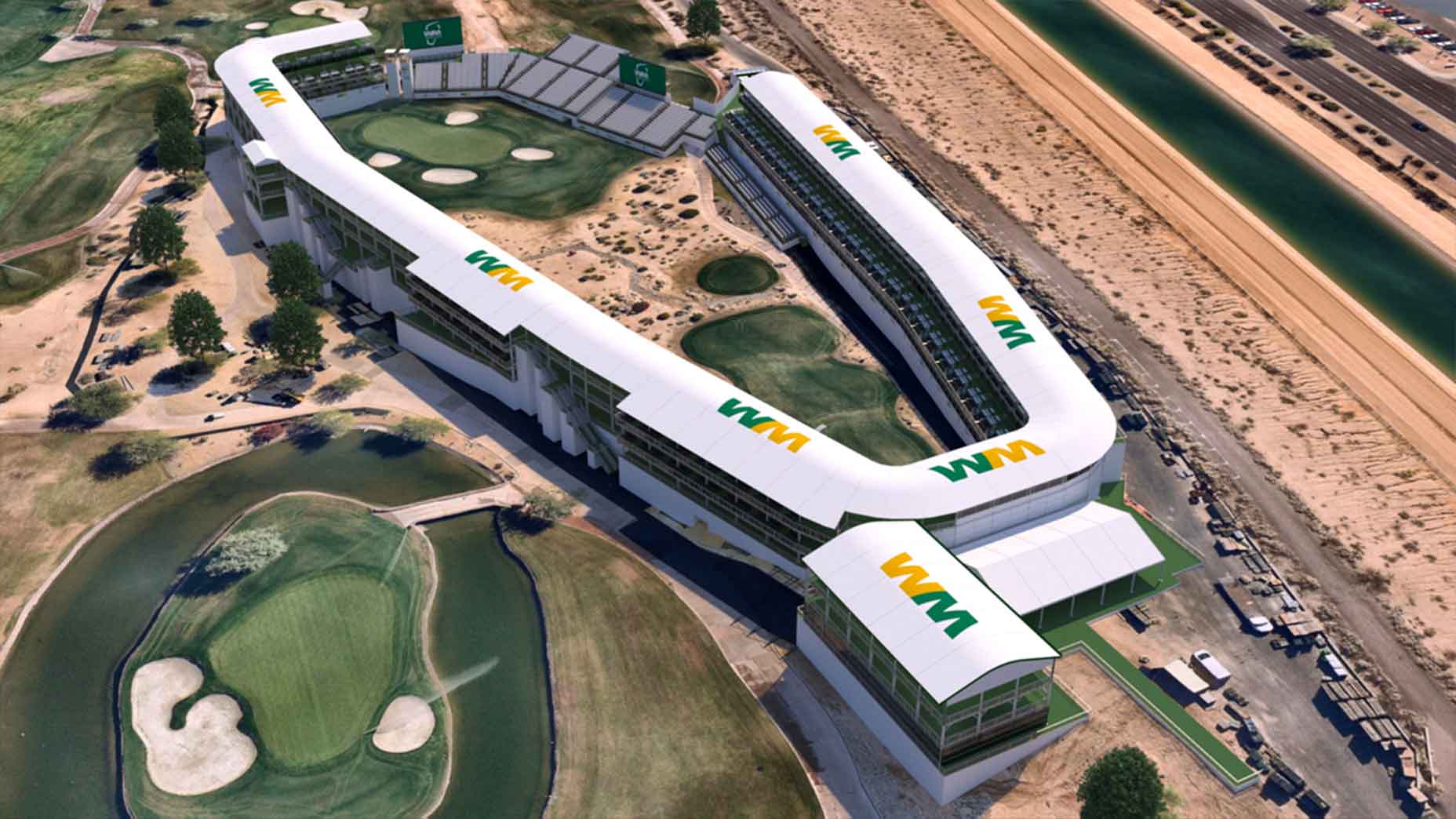Few holes in pro golf receive as much attention as the raucous par-3 16th at TPC Scottsdale’s Stadium Course, home of the WM Phoenix Open.
Dubbed “The Coliseum” when it transforms during Phoenix Open week, the only fully-enclosed hole on the PGA Tour seats more than 20,000 fans and has nearly 300 skyboxes in the grandstands.
It’s a bucket-list viewing experience for golf fans (for the uninformed, tune in this week and you’ll see why). But one thing some people don’t know is that that structure doesn’t stay up all year. So if you plan to tee it up at TPC Scottsdale in the future, for the majority of the year it looks just like a typical par-3 — and certainly not the same blood-pumping tee shot the enclosed atmosphere would generate.
So why isn’t it left up all year? That’s what GOLF Subpar Podcast co-host Colt Knost asked Chance Cozby on last week’s Subpar episode. Cozby is the executive director of The Thunderbirds, the charitable organization that operates the WM Phoenix Open.
For starters, Cozby said it’s on federal land that’s also managed by the Bureau of Reclamation. There’s also the City of Scottsdale that’s involved, plus TPC Scottsdale.
“We just use it for seven days,” Cozby said. “It’s penciled out to build it and to take it down, is the answer. Once you build a permanent structure, you better get it right. Because we make tweaks and changes every single year and we make it better every single year.”
Cozby said there are three Thunderbirds members assigned to that hole: a chairman, assistant and second assistant. Once you are named the second assistant, Cozby says, you have two years to figure out how to make the 16th hole even better.
“We aren’t going to go up, because it’s already at its max height,” he said. “But every year that chairman on that hole finds a way to make it better. And if you do a permanent structure it’s just complicated, it’s expensive, and then you can’t make changes.”
For this year’s tournament, which starts on Thursday, crews started building the structure surrounding the 16th during the first week of October. They’ll start ripping it down the week after the tournament, a process that usually takes about two months.
“The reality is it’s a 9-iron with a couple of bunkers,” Cozby said, “but you put that around it and it’s not a 9-iron with a couple of bunkers.”
You can listen to Cozby’s full Subpar episode below, and you can learn more about The Thunderbirds here.










